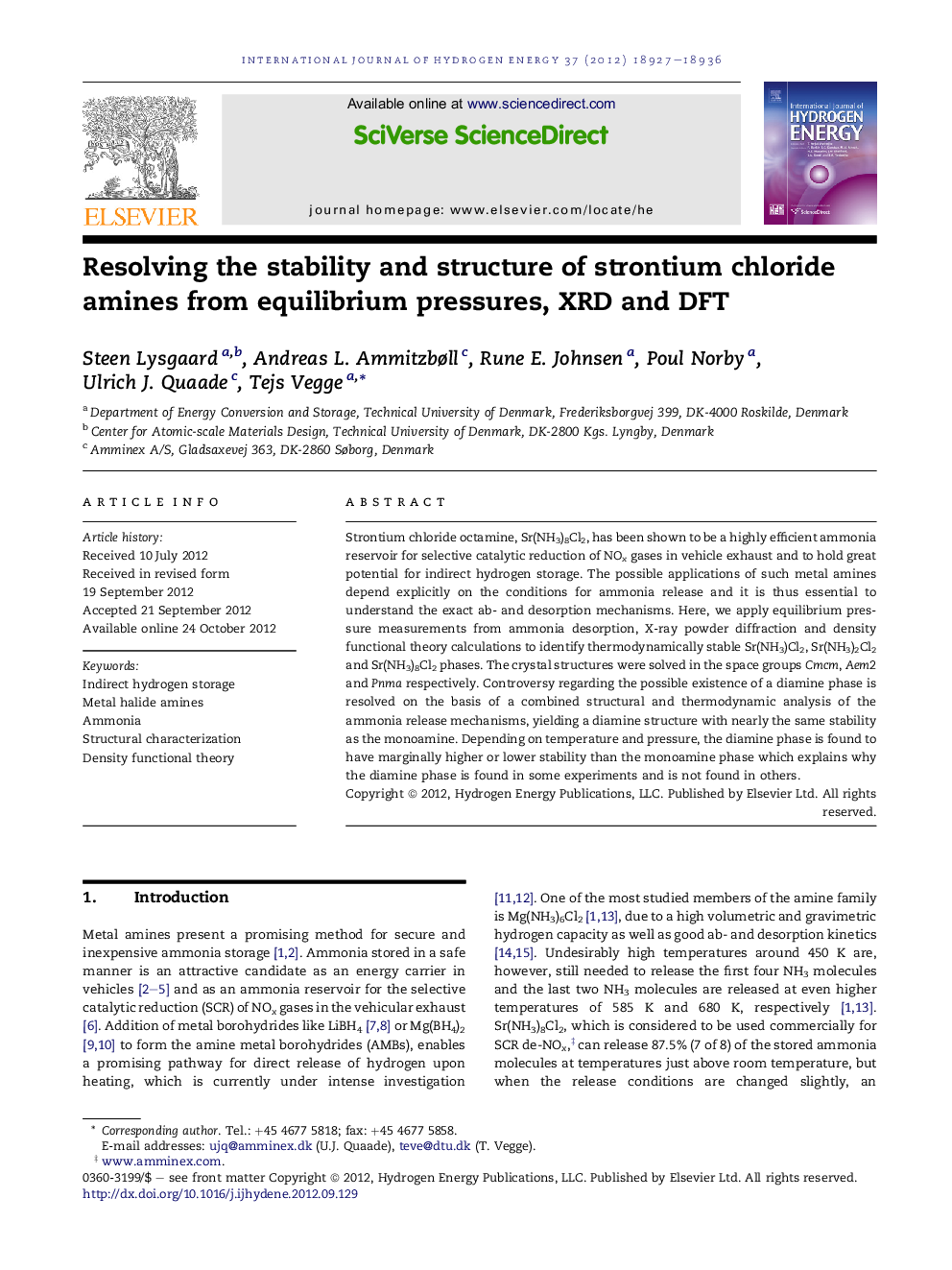| Article ID | Journal | Published Year | Pages | File Type |
|---|---|---|---|---|
| 1276098 | International Journal of Hydrogen Energy | 2012 | 10 Pages |
Strontium chloride octamine, Sr(NH3)8Cl2, has been shown to be a highly efficient ammonia reservoir for selective catalytic reduction of NOx gases in vehicle exhaust and to hold great potential for indirect hydrogen storage. The possible applications of such metal amines depend explicitly on the conditions for ammonia release and it is thus essential to understand the exact ab- and desorption mechanisms. Here, we apply equilibrium pressure measurements from ammonia desorption, X-ray powder diffraction and density functional theory calculations to identify thermodynamically stable Sr(NH3)Cl2, Sr(NH3)2Cl2 and Sr(NH3)8Cl2 phases. The crystal structures were solved in the space groups Cmcm, Aem2 and Pnma respectively. Controversy regarding the possible existence of a diamine phase is resolved on the basis of a combined structural and thermodynamic analysis of the ammonia release mechanisms, yielding a diamine structure with nearly the same stability as the monoamine. Depending on temperature and pressure, the diamine phase is found to have marginally higher or lower stability than the monoamine phase which explains why the diamine phase is found in some experiments and is not found in others.
Graphical abstractFigure optionsDownload full-size imageDownload as PowerPoint slideHighlights► Identification of desorption pathway of Sr(NH3)8Cl2 from sorption isotherms and DFT. ► Crystal structures of Sr(NH3)xCl2x = 1, 2, 8 are resolved by XRPD and confirmed by DFT. ► Sr(NH3)2Cl2 is verified to be stable within a narrow pressure and temperature gap.
